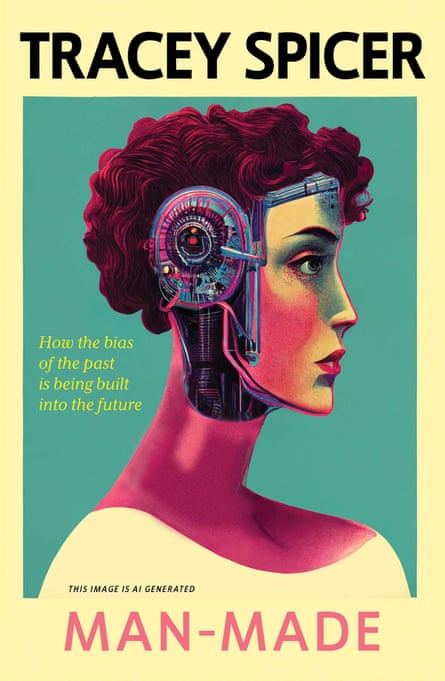Art
AI art replicates inequity at scale. We need to learn about its biases – and outsmart the algorithm
In 1840, the French painter Paul Delaroche saw the first daguerreotype – an early photographic process – and proclaimed that “from today, painting is dead”. One can understand him feeling threatened by the technology, but we know now he was dead wrong: instead, that year marked the birth of the art of photography.
Throughout history, there’s been fierce debate about the demarcation between science and the arts. It continues in the form of the great AI debate. In February this year, the winning photo in an Australian photography competition was created entirely by artificial intelligence; months earlier, a man used text-to-image software to take out the top prize in the Colorado Art Fair; and in 2018, a rudimentary painting produced by AI sold through Christie’s for US$432,500.
Late last year, in the remote Huon Valley in Tasmania, a freelance visual designer was inspired to experiment. Meng Koach had been commissioned by a publishing house to create a cover image for my new book about bias in artificial intelligence.
Through the eyes of a 55-year-old journalist like myself, this is a brave new world. A contentious and controversial world. There’s a long history of legislation and regulation trailing advances in technology.
The process is exciting and terrifying. Koach typed words into Midjourney AI, which runs on Discord – a gaming platform I’m familiar with from several screaming matches with one of my teens. “Ghosts in the machine.” “A cybernetic forest.” “The bias of the past being built into the future.” These fragments make scant sense out of context. But they’re enough to construct a book cover within seconds.

The software uses billions of online images, identified by digital labelling from innovations like alt text. But the question remains: do AI art generators copy or steal other artists’ work?
“Unlike copying/stealing, there’s also taking inspiration,” Koach contends. “This subconscious accumulation of seeing and remembering art from other artists will, at one point, become apparent and trigger inspiration. Isn’t this the machine’s way of ‘taking inspiration’?”
The artistic community seems split. Some celebrate the removal of barriers into this rarefied realm; anyone can be an artist these days. Others are joining class actions, accusing the tech companies of appropriating art without credit, consent or compensation.
As a journalist, I’m fascinated but horrified by these developments. My book rails against the prospect of automation displacing millions of jobs. Still, this is a crucial conversation to be having right now. Technology continues to trample the media landscape. Even respected magazines such as The Economist are using AI to create artwork.
But using these programs is not as simple as it seems. While Koach was “shocked” at how quickly the initial cover images appeared, they didn’t quite convey the themes of the book. And as we added in new prompts – “artificial intelligence designed by man”; “back to the 1950s”; “strong women working together” – a different problem emerged. Female robots were sexualised with large breasts and tiny waists. The algorithm misinterpreted “strong women” as “massive biceps”.
My book, Man-Made, is about stereotypical images and words in datasets being used to train algorithms. These baby biases become troublesome teenagers through machine learning. The bots are increasingly bigoted, like white supremacists neck-deep in conspiracy theory websites.
Apps like Stable Diffusion, Dall-E and Midjourney can imagine a deserted island in the style of Monet. But if you ask for images of a CEO, it’s generally an older white male. Nurses? Almost all female. And if you don’t specify skin colour, the bots default to white people.
While humans are inherently biased, technology is replicating inequity at scale. We need to master this technology before it enslaves us.
after newsletter promotion
Koach is keen to reframe AI art as simply another design tool. “The artist and the technology are intertwined throughout the creative process,” he says, and new roles are popping up in the sector too. Prompt Driver, anyone …?
Technology tends to move in one direction: its owners amass obscene profits while ethics is a mere afterthought. So what of the copyright issues? According to the Arts Law Centre of Australia, it’s still unclear. There are calls for AI models to be trained only on images in the public domain. As an ex-TV type, watermarks spring to mind as a way to prove ownership of digital content.
This debate isn’t new. The first computer programmer, Ada Lovelace, predicted the technological creation of art when she wrote about the idea of “poetical science” in the 1840s.
This was the same decade Paul Delaroche declared painting to be mort – but instead we saw the emergence of new genres of painting, such as impressionism. There was a shift in how people approached art.
Koach looks to the past for a hopeful take on the future: “AI art might shift our values away from, ‘Does this image have all the colours, compositions and styles that I want?’ to, ‘Is this image meaningful or special in some other way?’.”
But if we want to live with this technology, we need to be proactive. Learn about the complexity and bias within AI and keep a close eye on where it’s going. Regulate the industry, to protect users and creators. And outsmart the algorithms.
- Tracey Spicer’s book, Man-Made: How the bias of the past is being built into the future, is out May 2023

Art
Ukrainian sells art in Essex while stuck in a warzone – BBC.com
[unable to retrieve full-text content]
Ukrainian sells art in Essex while stuck in a warzone BBC.com

Source link
Art
Somerset House Fire: Courtauld Gallery Reopens, Rest of Landmark Closed
The Courtauld Gallery at Somerset House has reopened its doors to the public after a fire swept through the historic building in central London. While the gallery has resumed operations, the rest of the iconic site remains closed “until further notice.”
On Saturday, approximately 125 firefighters were called to the scene to battle the blaze, which sent smoke billowing across the city. Fortunately, the fire occurred in a part of the building not housing valuable artworks, and no injuries were reported. Authorities are still investigating the cause of the fire.
Despite the disruption, art lovers queued outside the gallery before it reopened at 10:00 BST on Sunday. One visitor expressed his relief, saying, “I was sad to see the fire, but I’m relieved the art is safe.”
The Clark family, visiting London from Washington state, USA, had a unique perspective on the incident. While sightseeing on the London Eye, they watched as firefighters tackled the flames. Paul Clark, accompanied by his wife Jiorgia and their four children, shared their concern for the safety of the artwork inside Somerset House. “It was sad to see,” Mr. Clark told the BBC. As a fan of Vincent Van Gogh, he was particularly relieved to learn that the painter’s famous Self-Portrait with Bandaged Ear had not been affected by the fire.
Blaze in the West Wing
The fire broke out around midday on Saturday in the west wing of Somerset House, a section of the building primarily used for offices and storage. Jonathan Reekie, director of Somerset House Trust, assured the public that “no valuable artefacts or artworks” were located in that part of the building. By Sunday, fire engines were still stationed outside as investigations into the fire’s origin continued.
About Somerset House
Located on the Strand in central London, Somerset House is a prominent arts venue with a rich history dating back to the Georgian era. Built on the site of a former Tudor palace, the complex is known for its iconic courtyard and is home to the Courtauld Gallery. The gallery houses a prestigious collection from the Samuel Courtauld Trust, showcasing masterpieces from the Middle Ages to the 20th century. Among the notable works are pieces by impressionist legends such as Edouard Manet, Claude Monet, Paul Cézanne, and Vincent Van Gogh.
Somerset House regularly hosts cultural exhibitions and public events, including its popular winter ice skating sessions in the courtyard. However, for now, the venue remains partially closed as authorities ensure the safety of the site following the fire.
Art lovers and the Somerset House community can take solace in knowing that the invaluable collection remains unharmed, and the Courtauld Gallery continues to welcome visitors, offering a reprieve amid the disruption.
Art
Sudbury art, music festival celebrating milestone

Sudbury’s annual art and music festival is marking a significant milestone this year, celebrating its long-standing impact on the local cultural scene. The festival, which has grown from a small community event to a major celebration of creativity, brings together artists, musicians, and visitors from across the region for a weekend of vibrant performances and exhibitions.
The event features a diverse range of activities, from live music performances to art installations, workshops, and interactive exhibits that highlight both emerging and established talent. This year’s milestone celebration will also honor the festival’s history by showcasing some of the artists and performers who have contributed to its success over the years.
Organizers are excited to see how the festival has evolved, becoming a cornerstone of Sudbury’s cultural landscape. “This festival is a celebration of creativity, community, and the incredible talent we have here in Sudbury,” said one of the event’s coordinators. “It’s amazing to see how it has grown and the impact it continues to have on the arts community.”
With this year’s milestone celebration, the festival promises to be bigger and better than ever, with a full lineup of exciting events, workshops, and performances that will inspire and engage attendees of all ages.
The festival’s milestone is not just a reflection of its past success but a celebration of the continued vibrancy of Sudbury’s arts scene.

-

 News6 hours ago
News6 hours agoRCMP say 3 dead, suspects at large in targeted attack at home in Lloydminster, Sask.
-

 Sports5 hours ago
Sports5 hours agoLawyer says Chinese doping case handled ‘reasonably’ but calls WADA’s lack of action “curious”
-

 News4 hours ago
News4 hours agoHall of Famer Joe Schmidt, who helped Detroit Lions win 2 NFL titles, dies at 92
-

 News15 hours ago
News15 hours agoRBC names Katherine Gibson as permanent chief financial officer
-

 News6 hours ago
News6 hours agoNova Scotia adopts bill declaring domestic violence in the province an epidemic
-

 News16 hours ago
News16 hours agoCanadanewsmedia news September 12, 2024: Air Canada pilot strike looms, BC transit strike talks resume
-

 News4 hours ago
News4 hours agoB.C. to scrap consumer carbon tax if federal government drops legal requirement: Eby
-
News14 hours ago
Local Toronto business story – Events Industry : new national brand, Element Event Solutions



















